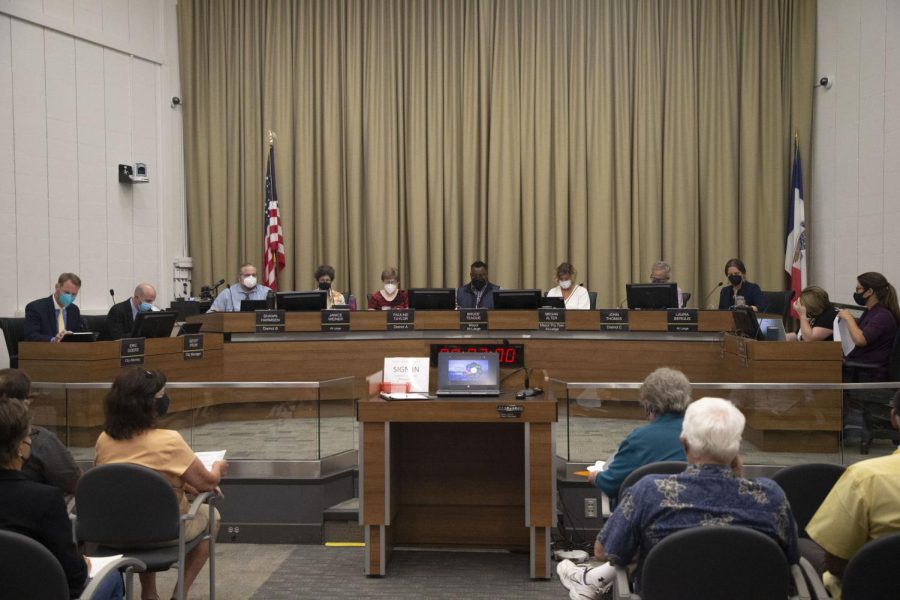Why the affordable housing location model had to go
Models like this end up restricting the number of affordable homes.
The Iowa City City Council on Tuesday, Aug. 16, 2022.
November 13, 2022
After 10 years, the Iowa City City Council finally did the right thing and scrapped the poorly-designed Affordable Housing Location Model. The policy — while implemented with the best intentions — ended up making housing unaffordable for low-income residents.
Now, the city must take the next step and revamp zoning policy to make sure we can build affordable housing anywhere in Iowa City.
The Affordable Housing Location Model was a case study in bad housing policy because it restricted where affordable housing could be built. The plan originally envisioned that new housing would not be built in zones inflicted with poverty-related issues.
Proponents of the model believed it would encourage developers to build housing in residential areas where incomes skewed toward the higher end of the income distribution.
What happened instead was that developers were limited in where they could put affordable housing. As a result, the number of affordable housing units built did not meet the needs of the Iowa City community.
The lessons learned from the failure of the Affordable Housing Location Model brings us back to the supply and demand framework and on the supply side in particular.
The Affordable Housing Location Model lowered the supply of housing, thus driving up housing prices for people looking for housing.
Ditching this policy means developers can now build wherever they want to, as there are less building restrictions. In turn, housing units would become more affordable because prices would decrease.
One popular argument against using the supply and demand framework in housing policy is that that developers would build new housing in areas with high poverty. This would then lead to poor people being priced out of their old neighborhoods and forced into worse housing conditions.
This so-called “gentrification narrative” that people hear so much about in opposition to the construction of new housing is fake.
Unfortunately for the gentrification people, building new housing in zones with high rates of poverty encourages a chain effect that ends up bettering the material situation for poor people.
This works because some middle-class to upper middle-class homeowners are looking to move to a new home for a variety of reasons. For that reason, they move to the new buildings. This makes the homes that they previously occupied affordable for poor people, as landlords and rental agencies decrease prices for those homeowners.
There is a plethora of empirical literature that confirms the chain effect. Research also shows that building new housing — no matter where that housing is built — ends up lowering the price of housing in a market. As I have written in these pages many times before, for every 10 percent increase in housing stock, there is a 1 percent decrease in rental prices.
The Affordable Housing Location Model was a 10-year experiment that failed to achieve its goal. The city council made the right decision to scrap it and is now taking the first steps to make housing affordable for all Iowa City residents.
Columns reflect the opinions of the authors and are not necessarily those of the Editorial Board, The Daily Iowan, or other organizations in which the author may be involved.



